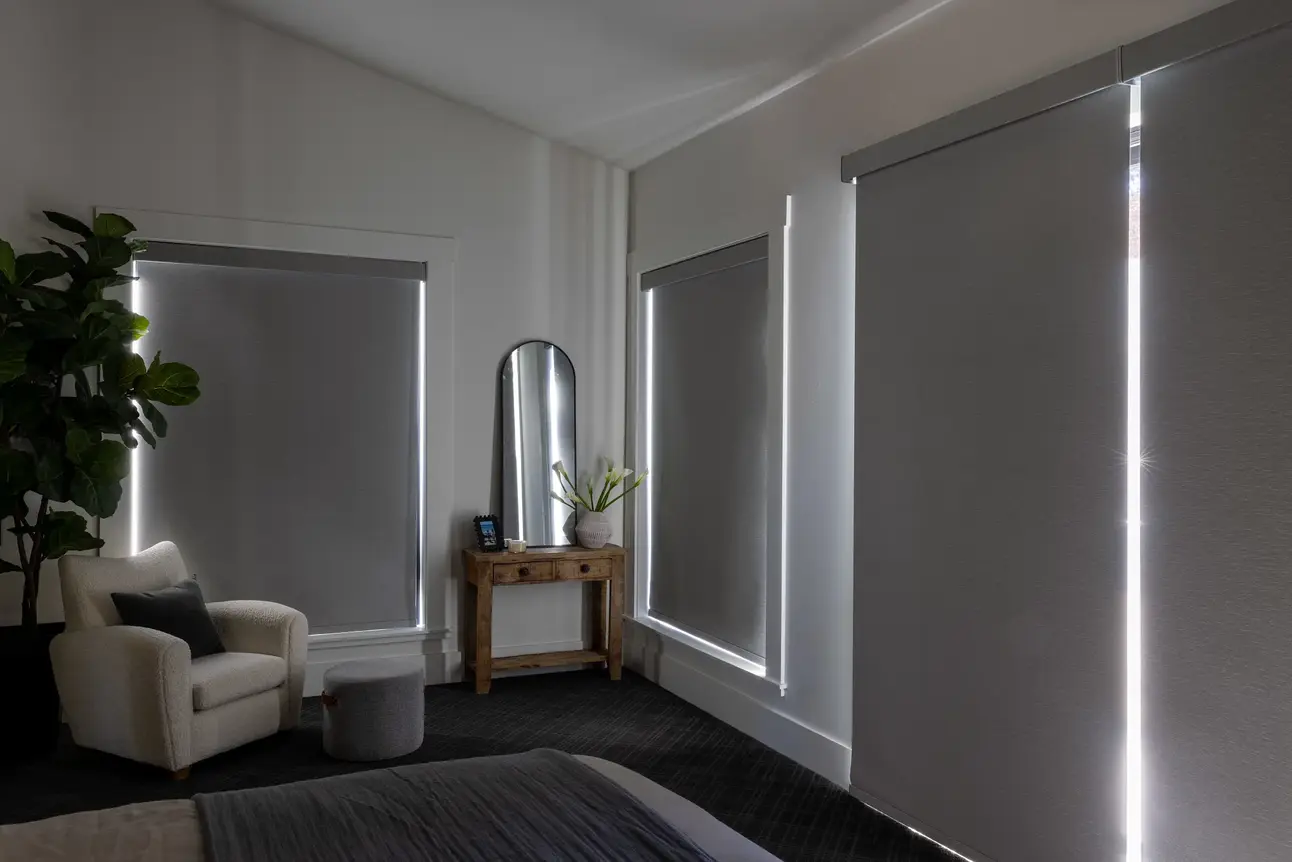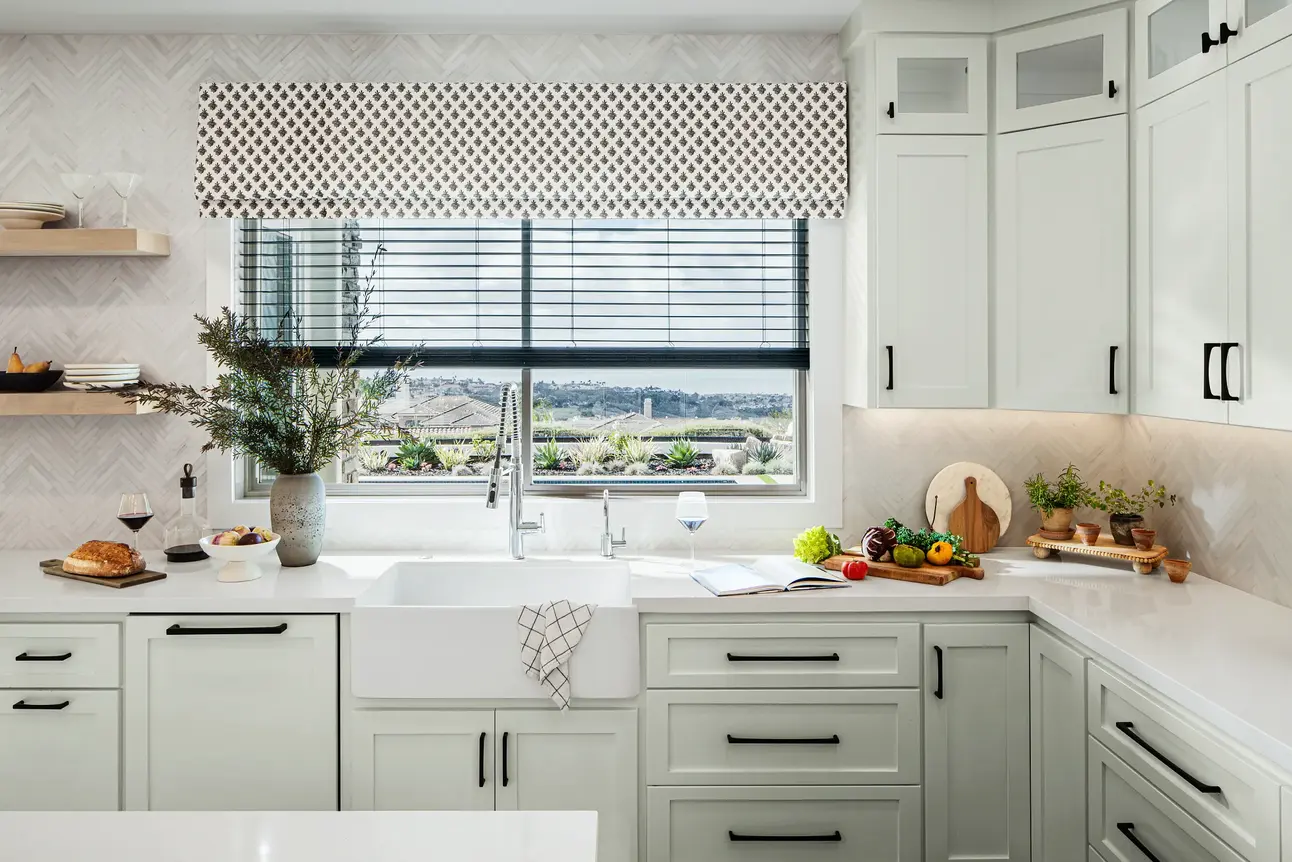Blackout vs light filtering roller shades is the key choice when you want the right balance of brightness and seclusion in each room of your home. Blackout roller shades block outside light for better sleep and screen comfort, while light-filtering roller shades soften daylight to create a warm, welcoming feel. This guide compares both options and shows where each material excels, and it references core features of Roller Shades like fabric openness, mounts, and controls.
The Difference Between Blackout and Light-Filtering Roller Shades
Blackout roller shades provide as much darkness as possible while providing full privacy, Light-filtering roller shades soften natural light and maintain an open, welcoming feel. The key difference lies in how much light each shade allows through and how much privacy you want throughout the day.
How They Differ at a Glance
Blackout Roller Shades
Blocks nearly all external light
Enhances privacy day and night
Helps regulate temperature for energy savings
Ideal for bedrooms, nurseries, and media rooms
Reduces glare from windows for better screen comfort
Light-Filtering Roller Shades
Gently diffuses daylight without full blackout
Maintains a bright, comfortable atmosphere with daytime privacy
Adds warmth and visual softness to a space
Ideal for living rooms, dining areas, and kitchens
Helps reduce glare and provides UV protection for interiors
How Blackout Roller Shades Work and Where They Excel
Blackout roller shade fabrics have 0% openness, which means it’s fully solid and doesn’t let light pass the material. These shades work best when they fit snugly and use the right hardware.
Setups that improve room darkening
Cassette or valance to cover the headrail
Reverse roll to bring fabric closer to the glass
A blackout shade with side channels can further tighten edge control
Weighted hem bar for a flatter hang
Choose blackout roller shades for bedrooms, nurseries, and media rooms where room darkening and quiet are priorities. For the strongest results, consider professional measuring and installation.
When to Use Light-Filtering Roller Shades
Light-filtering roller shade fabrics typically range from about 1% to 5% openness. They soften light and improve screen comfort while keeping interiors bright and inviting.
What to consider
Lower openness gives more privacy and is less see-through
Darker fabrics reduce better glare
Lighter fabrics brighten the room and maintain a softer view
Use light-filtering roller shades in living rooms, dining rooms, and kitchens where comfortable illumination matters.
Minimizing Glare and Light Gaps
Inside-mount roller shades require side clearance for hardware, which creates a narrow light gap at the window edges. Reduce spill with an outside mount that overlaps the window trim, side channels, a cassette, and a weighted hem bar. These choices improve darkening performance and improve overall comfort.
For more ways to improve evening privacy, see our guide to roller shades for privacy at night.
Side-by-Side Comparison: Roller Shade Performance
| Aspect | Blackout Roller Shades | Light-Filtering Roller Shades |
|---|---|---|
| Light control | Blocks nearly 100% of daylight | Softens and diffuses daylight |
| Daytime seclusion | High | Moderate, openness dependent |
| Night view-in protection | High | Lower, may be see through at night, consider layering |
| Glare reduction | Excellent for tvs and monitors | Good; diffuses incoming light |
| Light gaps | Mitigate with outside mount, channels, cassette | Good; Light gaps are less noticeable and can be similarly reduced |
| Openness / opacity | 0% (opaque backing) | About 1%–5% openness |
| Best room use | Bedrooms, nurseries, media rooms | Living rooms, dining rooms, kitchens, home offices |
| Maintenance | Dust or vacuum lightly; spot clean, avoid harsh chemicals. | Dust or vacuum lightly; spot clean. Avoid harsh chemicals |
| Smart controls | Motorization and smart home integrations available | Also available with motorization and smart home integrations |
Best Window Treatments by Room
Not all rooms need the same level of brightness and seclusion. Use this quick guide to match fabric type to each room.
Light-Filtering Fabrics (1-5% Openness)
Living rooms
Diffuse harsh daylight and keep a bright, comfortable feel for relaxing or entertaining.Dining rooms
Add a warm glow for meals and gatherings without harsh brightness.Kitchens
Soften daylight while keeping the space bright and easy to work in.
Blackout Fabrics (0% Openness)
Bedrooms
Block morning light for better sleep and restful routines.Media rooms and home theaters
Reduce glare and create a darker, cinema-like setting.Nurseries
Support daytime naps by limiting brightness and stimulation.
Pros and Cons of Roller Shade Fabrics
Blackout roller shades deliver strong room darkening and view-in protection. They can improve sleep and screen comfort and add a layer of insulation. The potential drawback is a darker look in shared spaces and fewer decorative textures.
Light-filtering roller shades brighten a room and add visual softness while managing glare. At night they offer less view-in protection, so consider layering with curtains or choosing a dual rollers for flexible control.
The main tradeoff is that neither of them provide complete light control, especially at night. For those needing enhanced evening privacy, layering with curtains or using dual shades may be necessary.
Dual Roller Setup for Day and Night
Dual roller shades combine a light-filtering panel and a room-darkening panel on one bracket. Use the light-filtering shade during the day to soften daylight and reduce glare, then switch to the darker shade at night for greater privacy and light control. This setup offers flexible window coverage without changing products, and blackout fabrics shades block streetlight for a more restful space.
Choosing Shades for Your Home
Room purpose
Do you want a darker setting for sleep and screens, or softer daylight for shared spacesFabric selection
Choose blackout fabric for darkness or a filtering fabric for light and visibility that fits your needsMounting and hardware
Cassette, reverse roll, side channels, and outside mounts are choices that can help reduce light spillControls
Cordless and motorized lifts improve safety and convenience, and smart controls enables you to schedule your shades during the dayFit and finish
Precise measuring and professional installation help ensure a clean result
Explore Custom Roller Shades
Get custom roller shades made to fit your windows and your routine. Choose from a wide range of blackout and light-filtering fabrics, motorized controls, and designer finishes. Our free in-home consultation includes expert design advice, professional measuring, and installation backed by a limited lifetime warranty.
Schedule your free in-home consultation today and discover how easy it is to find the best light filtering solutions for every window in your home.




.png?Status=Master&sfvrsn=d5947d95_1)
.png?Status=Master&sfvrsn=4c04cf13_1)
.png?Status=Master&sfvrsn=837b23bd_1)
.png?Status=Master&sfvrsn=f55daebb_1)


